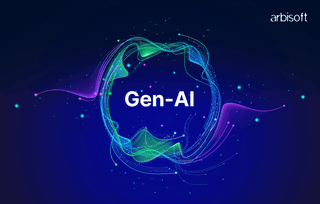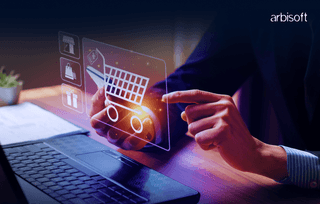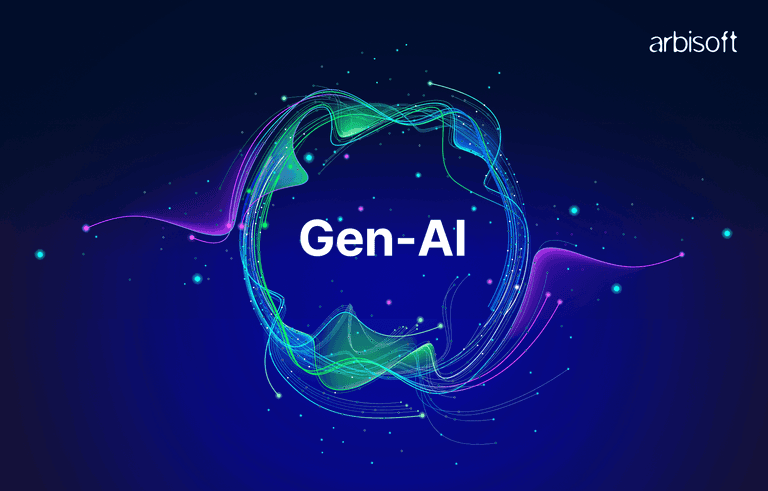We put excellence, value and quality above all - and it shows




A Technology Partnership That Goes Beyond Code

“Arbisoft has been my most trusted technology partner for now over 15 years. Arbisoft has very unique methods of recruiting and training, and the results demonstrate that. They have great teams, great positive attitudes and great communication.”
Integrating AI in DevSecOps: Automated Threat Detection in QA

Software security is no longer just an IT concern, it’s a business priority. A single vulnerability in an application can lead to massive data breaches, regulatory fines, and loss of customer trust. Yet, many companies still struggle to integrate security effectively into their development pipelines. Security testing often happens too late, slowing down releases or missing critical threats altogether.
This is where AI-driven security testing is making an impact. By embedding automated threat detection into QA, companies can move beyond manual, reactive security checks and shift to proactive, AI-enhanced threat monitoring. This means catching vulnerabilities before they become a problem, without slowing down development.
Let’s explore how AI is reshaping DevSecOps, improving security testing, and the tools that are leading this transformation.
Struggling with Security Testing? Use AI to Make It Easier.
Get the AI-Powered Security Testing Checklist Now and Learn How to Integrate AI for Faster Threat Detection, Automated Response, and Continuous Security Improvement!

Get the AI-Powered Security Testing Checklist Now and Strengthen Your DevSecOps Pipeline!

Security Testing Is Still a Bottleneck: AI Changes That
DevSecOps aims to make security a continuous part of development, rather than an afterthought. But traditional security testing methods come with problems:
- Delayed detection: Security vulnerabilities are often caught in late-stage testing or after deployment.
- Overwhelming volume: With thousands of lines of code and frequent updates, manual reviews can’t keep up.
- False positives: Standard security tools flag too many issues, many of which turn out to be non-critical.
AI is changing this by bringing automation, predictive analysis, and real-time monitoring into security testing. Instead of waiting for human testers to review code manually, AI-driven tools continuously scan, analyze, and flag risks before deployment.
How AI Improves Threat Detection in QA
AI in security testing doesn’t just look for known vulnerabilities; it learns from past attacks and identifies new threats as they emerge. Here’s how AI enhances different stages of security testing:
1. Smarter Static Code Analysis
Traditional static code analysis tools follow pre-set rules, which means they often miss context-specific vulnerabilities. AI-powered analysis, on the other hand, adapts to coding patterns and detects anomalies in logic, structure, and dependencies.
Example Tools: DeepCode, Codiga, SonarQube AI
2. AI-Driven Threat Detection in Runtime
Security issues aren’t just in the code, they can emerge during execution. AI-powered runtime security tools monitor applications in real-time, spotting suspicious behavior that could indicate a vulnerability being exploited.
Example Tools: Darktrace, Lacework
3. Automated Vulnerability Prioritization
Not all security issues require immediate attention. AI helps rank vulnerabilities by severity and exploitability, ensuring teams focus on what matters most instead of wasting time on false positives.
Example Tools: Snyk, Fortify AI
4. Intelligent Penetration Testing
AI can simulate cyberattacks by automatically scanning applications for weak points. Unlike traditional penetration testing, which requires manual configuration and execution, AI-powered solutions can run continuously and adapt to changing attack patterns.
Example Tools: Astra Security, ImmuniWeb AI
5. Security Automation in CI/CD Pipelines
AI enforces security policies at every stage of the CI/CD pipeline. It automatically blocks risky code commits, ensures compliance with security best practices, and prevents vulnerabilities from entering production.
Example Tools: AWS CodeGuru, GitHub Advanced Security
6. AI for Automated Compliance Monitoring
Regulatory compliance is a major challenge, especially for industries handling sensitive data. AI can automatically check if applications meet security standards like GDPR, HIPAA, and SOC 2, reducing the risk of non-compliance. This helps teams ensure their applications are audit-ready at all times.
Example Tools: Drata, Scrut Automation
The Real Impact of AI-Driven Security in DevSecOps
Using AI in security testing can make a big difference for teams working in DevSecOps. It helps improve security, save time, and lower costs. Here’s how:
1. Faster Finding of Security Problems
AI can find problems in your software very quickly. While manual testing can take hours or even days, AI tools can spot issues in just seconds. This helps you fix security risks much faster and stop potential problems before they get worse.
2. Fewer False Alerts
A common issue with security testing is getting too many false alarms. These can waste time and distract your team. AI helps reduce these by learning from past data. Over time, it gets better at finding real threats and sending fewer unnecessary alerts, so your team can focus on what really matters.
3. Always-On Monitoring
AI-powered security tools are always working, 24/7. Unlike traditional security systems that might only be active during certain hours, AI never stops. It keeps checking for risks even after your software has been deployed, so you don’t miss any potential issues.
4. Lower Costs to Fix Problems
Finding security problems early is much cheaper than finding them later in the development process. When you use AI, you catch these issues sooner, which saves money on fixes. If you wait until later, it can cost a lot more to repair security issues.
5. More Time for Developers to Work
With AI handling security testing, developers don’t have to stop coding to deal with security problems. Security checks happen in parallel with development, so there are fewer delays. This lets developers stay focused on their work and get things done faster.
In short, AI-driven security in DevSecOps helps you find and fix problems quickly, saves money, and makes the development process more efficient.
Challenges and Risks of AI in Security Testing
While AI improves security testing, it’s not without challenges:
- False negatives: AI models are only as good as the data they are trained on. If an attack type isn’t well-documented, AI might not recognize it.
- Security of AI itself: Attackers can manipulate AI models by feeding them misleading data, making them overlook real threats.
- Implementation complexity: AI security tools require integration with existing DevSecOps workflows, which may involve a steep learning curve.
- Data privacy concerns: AI security tools rely on large amounts of data, which may introduce privacy risks if not handled correctly.
Despite these challenges, AI is becoming a critical part of DevSecOps strategies as organizations look for faster, more accurate, and scalable security solutions.
What’s Next for AI in DevSecOps?
AI-driven security testing is evolving rapidly, and its role in DevSecOps will only expand. Some emerging trends include:
- AI-powered remediation: Future AI tools won’t just detect vulnerabilities; they’ll suggest or even apply fixes automatically.
- Self-learning security models: AI models that update themselves based on new threats in real-time, reducing reliance on manual tuning.
- Integration with blockchain for auditability: AI security logs stored on blockchain for tamper-proof security tracking.
- AI-driven insider threat detection: Advanced AI models will analyze user behavior to detect potential insider threats before they cause harm.
Final Thoughts
AI is transforming how security testing fits into DevSecOps. It’s not replacing human security teams, but it’s eliminating manual bottlenecks, reducing errors, and making security a proactive process rather than a reactive one.
By integrating AI-driven threat detection into QA, organizations can release software faster and more securely, without compromising on protection. The future of DevSecOps isn’t just automation, it’s intelligent security that evolves with every new challenge.
























